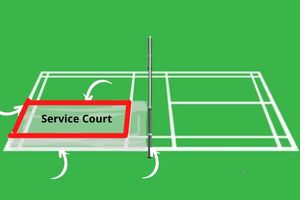Para badminton is a category of badminton for athletes with a range of physical disabilities. It made its debut as a Paralympic sport for the first time at the 2020 Tokyo Paralympic Games. However, it has been played internationally since the 1990s. The sport is governed by the Badminton World Federation.
The first World Championships took place in 1998 in Amersfoort, Netherlands. Since 2001, the tournament has taken place every two biannually. To date, there have been 12 World Championships conducted with the last one taking place in Switzerland in 2019.
Table of Contents
Events /Classes
Just like badminton, para badminton athletes compete in men’s and women’s singles, men’s and women’s doubles, and also mixed doubles.
There are 6 classes of athletes to provide an equal platform to players of all disabilities. Specifically, there are 6 classes( 2 wheelchair and 4 standing) as explained below.
The two Wheelchair classes and one standing class(players with lower limb impairment) play half-court for singles.
Wheelchair
Athletes in the Wheelchair class compete in WH1 and WH2
Wheelchair 1 WH1: Players in this class require a wheelchair to play the sport. They are for athletes with both lower-limb and trunk impairments.
Wheelchair 2 WH2: This is for players who have impairment in one or both limbs and minimal or no impairment in the trunk. Like WH1, players in this class also require a wheelchair to play the sport.
Standing
Standing Lower 3 SL3: Players in this class have an impairment in one or both limbs and poor walking or running balance. Moreover, in this class, a player must play standing.
SL4: Here again a player must play standing but the players here have lesser impairment as compared to SL3. The player could have an impairment in one or both limbs and a minimum disability in walking/running balance.
Standing Upper 5 SU5: In this, the players have a disability in the upper limbs. The disability could be on the playing or non-playing hand.
Standing Stature 6 SH6: This class includes players that have a short stature due to a genetic condition also referred to as ‘Dwarfism’.
Wheelchair Rules
The player’s body is to be tied to the wheelchair with an elastic belt either around the waist or thighs or both.
The player’s feet must be fixated to the footrest of the wheelchair.
The seat of the wheelchair can be angled horizontal or backward but not forward.
The wheelchair should not be attached to any electric device to assist its movement.
The wheelchair can be attached with a rear supporting wheel that can extend beyond the main wheels.
Crutch Rules
A player with an upper or lower limb impairment can use a crutch. However, it should not exceed the player’s natural measurement from the armpit to the ground.
Service Rules
- The shuttlecock must be hit in such a way that it goes in an upward direction.
- In wheelchair badminton, the shuttle must be below the server’s armpit at the time of service. It is not allowed if the shuttle goes higher than that.
- In wheelchair badminton, the wheels of the server and receiver must be stationary at the instance of serving.
Badminton Court
In Para badminton, the court lines for different for each para-badminton class.
Wheelchair Singles Class
This is played half-court. However, to know the exact court area covered check the image below.

Wheelchair Doubles Class

Singles Standing Class

Reference: https://corporate.bwfbadminton.com/para-badminton/
